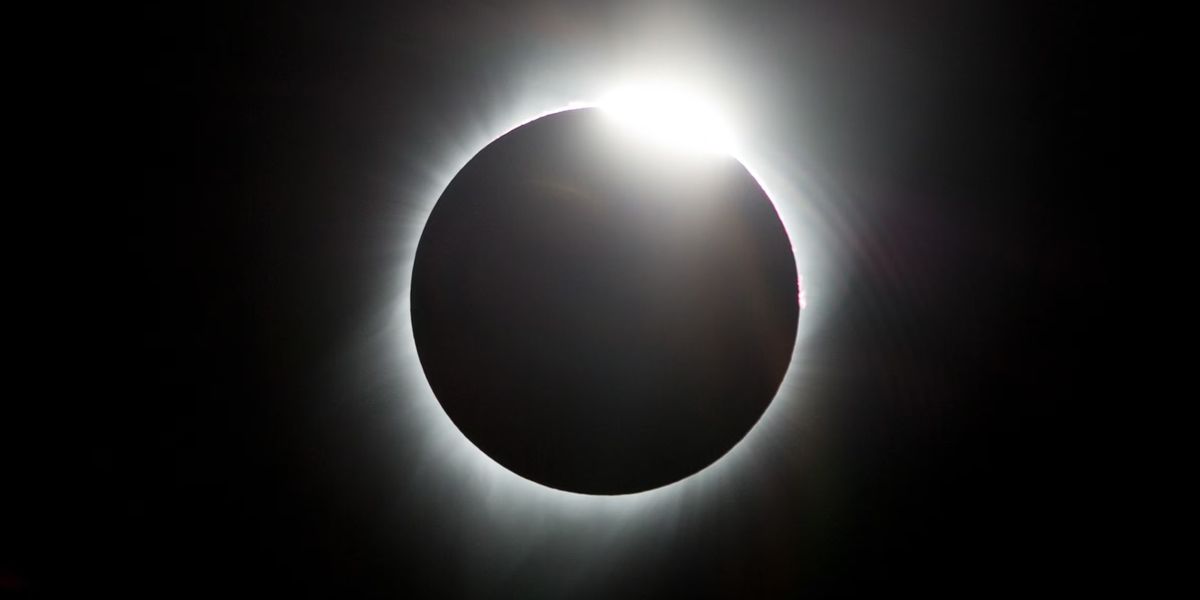Total solar eclipses, stunning meteor showers, dancing celestial bodies and passing comets: there will be a lot to see in the sky in 2024. We list the most important cosmic events for you.
January 18: Dance of Jupiter and the Moon
The year begins with a stunning duo in the night sky: the Moon and Jupiter. The largest planet in our solar system appears in the early evening sky next to a glowing crescent moon. Are you missing the couple in January? No problem. Jupiter and the Moon will also meet on February 14, March 13, and April 10.
April 8: Total solar eclipse
To see the biggest event in the sky in 2024, you will have to make a long journey. After all, the total solar eclipse that will occur on April 8 will orbit Mexico and the United States. Would you rather wait until something similar is admired in Europe? A total solar eclipse will occur in parts of Europe on August 12, 2026 and August 2, 2027. Be sure to wear proper eye protection to view this cosmic spectacle safely.
April: The comet passes near Earth
A giant comet, three times the size of Mount Everest, is moving rapidly toward the center of our solar system. Comet 12P/Pons-Brooks is composed mainly of ice, dust and gas, and regularly erupts as a cold volcano. The comet will be visible near Jupiter on April 12, and Ponce Brooks will be brightest nine days later, on April 21.
May 4: Peak of the η-Aquarid meteor shower
No one who loves meteors will want to miss meteor showers in 2024: conditions look like they will be ideal this year to experience the peak of this phenomenon. Visibility is expected to be best in the early hours of May 4, before sunrise. Then the moon rises late, making the sky very dark. In the Northern Hemisphere, stargazers can expect to see about ten to twenty meteors per hour.
August 12 and 13: Peak of the Perseids
Every August, Earth passes through a cloud of debris left behind by Comet Swift-Tuttle, causing meteors to appear in the sky. The Perseids produce an average of about sixty meteors per hour – and this year the conditions are very favourable. The peak of the meteor shower coincides with a dark, moonless night.
September 17: Saturn receives the Moon
At the end of the year, the Moon and Saturn will meet several times. This will happen on September 17, October 14, 15, November 11, and December 8. The two bright celestial bodies will be visible just after sunset, providing an impressive contrast: the moon's silvery glow alongside the giant planet's distinctive yellow.
October: Another comet
Comet hunters have been watching A3 Tuchinshan-ATLAS closely since the celestial body was first discovered in February 2023. The comet is expected to produce beautiful images by the end of 2024. The comet will already be visible using a small telescope in the summer. Starting in September, the comet's orbit will come close to the Sun and Earth for the first time in 80,000 years, which astronomers say could make A3 Tuchinshan-ATLAS visible to the naked eye in the Southern Hemisphere. For viewers in the Northern Hemisphere, if the comet survives its journey around the sun, it will appear as of October 12 and will be visible higher and higher in the sky from then on.

“Total coffee specialist. Hardcore reader. Incurable music scholar. Web guru. Freelance troublemaker. Problem solver. Travel trailblazer.”







More Stories
GALA lacks a chapter on e-health
Weird beer can taste really good.
Planets contain much more water than previously thought